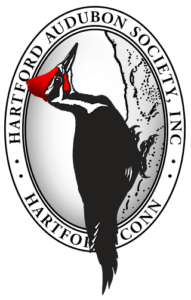HARTFORD SUMMER BIRD COUNT SUMMARY – JUNE 12-13 2021
As we moved through spring, Connecticut began to loosen up its COVID 19 restrictions, and people began to once again travel and attend events in mid-June. As such, coverage of our area during the Hartford Summer Bird Count was spotty in certain areas. Although the number of observers at 54, and total party hours at 168 were below the record numbers of last year (65 observers and 198 party hours), they were still well ahead of participatory totals in 2019. Several long time participants, however, were unavailable this year and their absence surely impacted our results, especially with regard to species totals.
Total species came in at 104, a decrease of seven from 2020. It was no surprise that last year’s unprecedented Western Meadowlark, accepted by the Avian Records Committee as the first sighting of this species in Hartford County, was not seen this year. Additional species seen in 2020, but not in 2021, include Black Duck, Broad-winged Hawk, American Kestrel, American Woodcock, both Black-billed and Yellow-billed Cuckoo, Blue-headed Vireo, Worm-eating and Yellow-rumped Warbler. Other species, not found last year, made an appearance on this year’s list including a Black-crowned Night Heron at Hartford’s sewage lagoon, a Red-headed Woodpecker in Wethersfield/Rocky Hill, and two Northern Parulas in East Hartford. Other birds of note included a Sharp-shinned Hawk in Glastonbury and Brown Thrashers in Glastonbury and Bloomfield. Glastonbury’s Purple Martin colony has now increased to 7 birds. Mute Swan, unreported in 2020, appeared in three areas totaling 15 individual birds.
Other species came very close to being unreported this year. The marshes of South Glastonbury did not produce Virginia Rails this year, but a single individual, along with a least bittern, was found near Station 43, South Windsor. Other species producing but a single individual included Eastern Screech Owl in Windsor, and Winter Wren, Black-and-white and Black-throated Green Warbler in West Hartford.
Several species showed little or no change over last year. Cliff Swallows were reported from the same three towns and totaled 40 birds, the same number reported in 2020. Eastern Meadowlarks and Bobolinks were still present, but in fewer numbers than seen in the previous year. The four meadowlarks were found only at the former Hartford landfill site. Last year, there were eight. The bobolinks were reported in the same four areas, but there were 40 compared to last year’s 46.
In addition to lack of coverage, there are other concerns for the future of the Summer Bird. Potential loss of habitat due to development, and to the encroachment of invasive plant species in critical habitats remain concerns.
The University of Hartford remains off limits to public visitors, denying access to a productive area along the Park River on the Hartford/West Hartford line.
We have been fortunate in terms of the weather on our Count weekend, but prolonged heat waves and torrential rains are always a concern leading up to Count Week.
This marks the 31st year for the Hartford SBC, providing information on the status of breeding bird populations in the Hartford area. In this, the final breeding season of the Connecticut Breeding Bird Atlas project, the Summer Bird Count continued to add valuable data to this worthy effort. As compiler, I thank the area captains and the 55 participants who donated their time to participate in the Count this year. Results of ours and the other Connecticut SBCs will be published in an upcoming edition of The Connecticut Warbler, quarterly journal of the Connecticut Ornithological Association. For more information on the atlasing project, go to www.ctbirdatlas.org A full accounting of the species found on the Hartford Count is available by e-mailing me at jaybrd49@aol.com
Jay Kaplan, Compiler
Hartford Summer Bird Count


